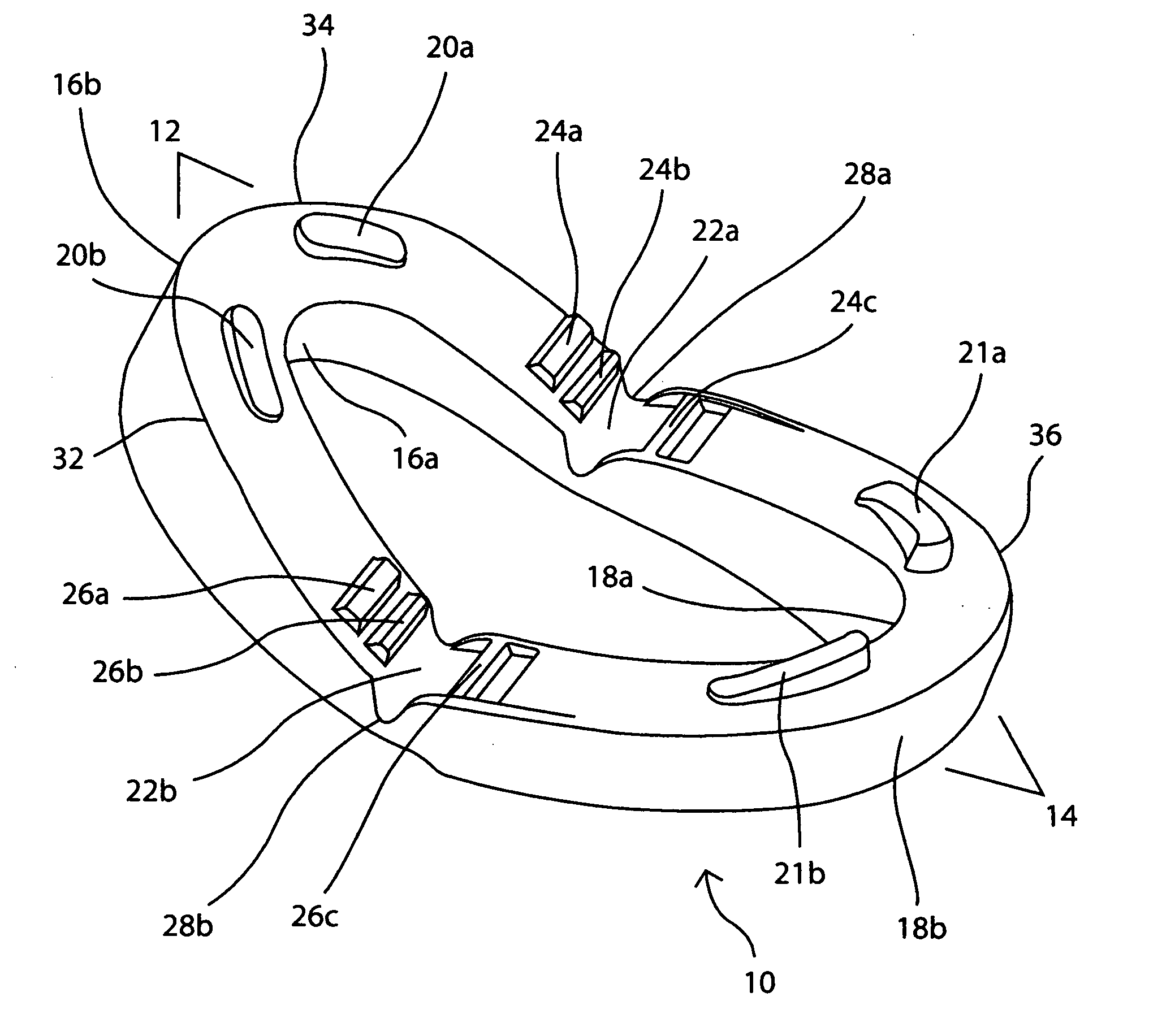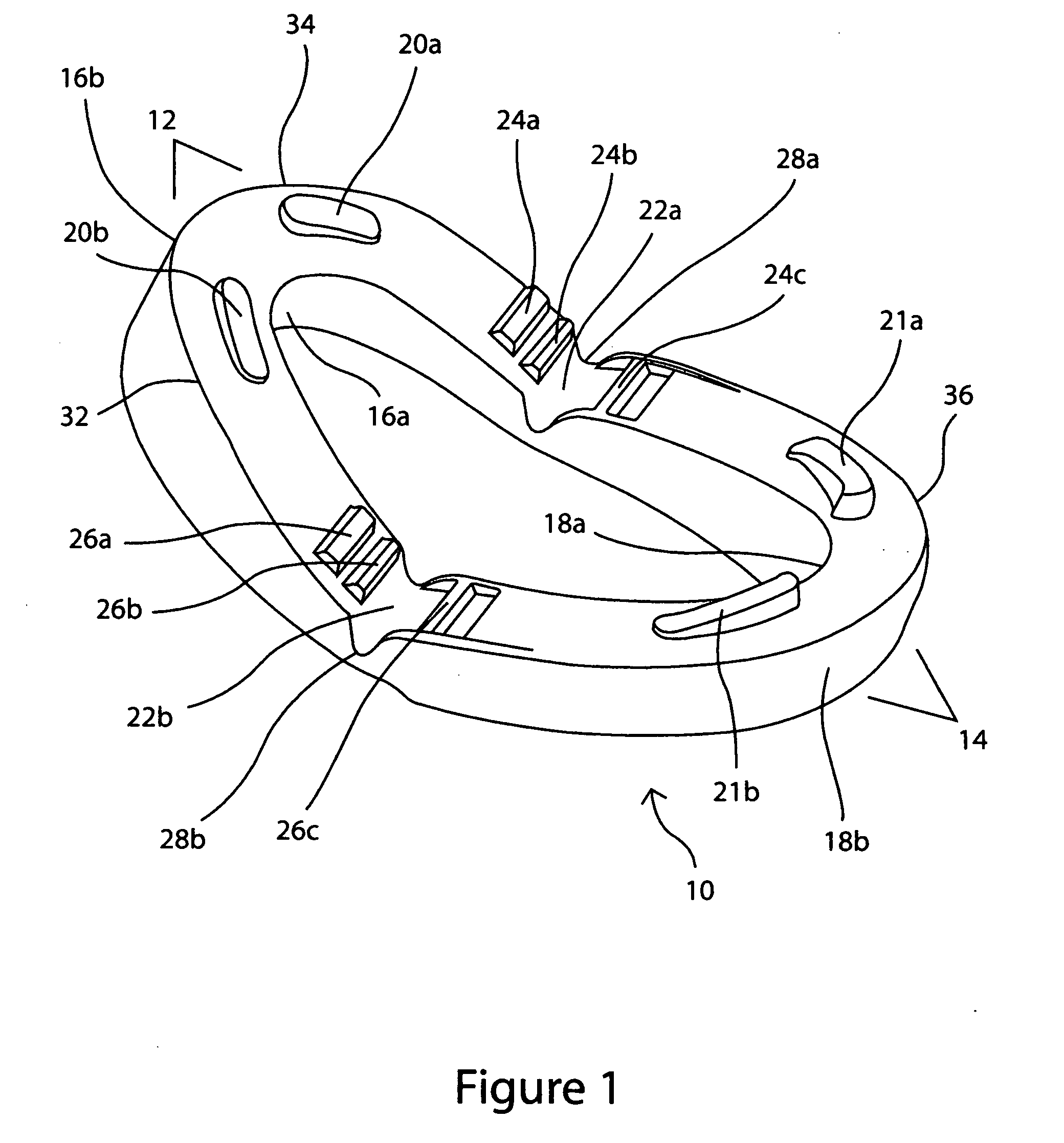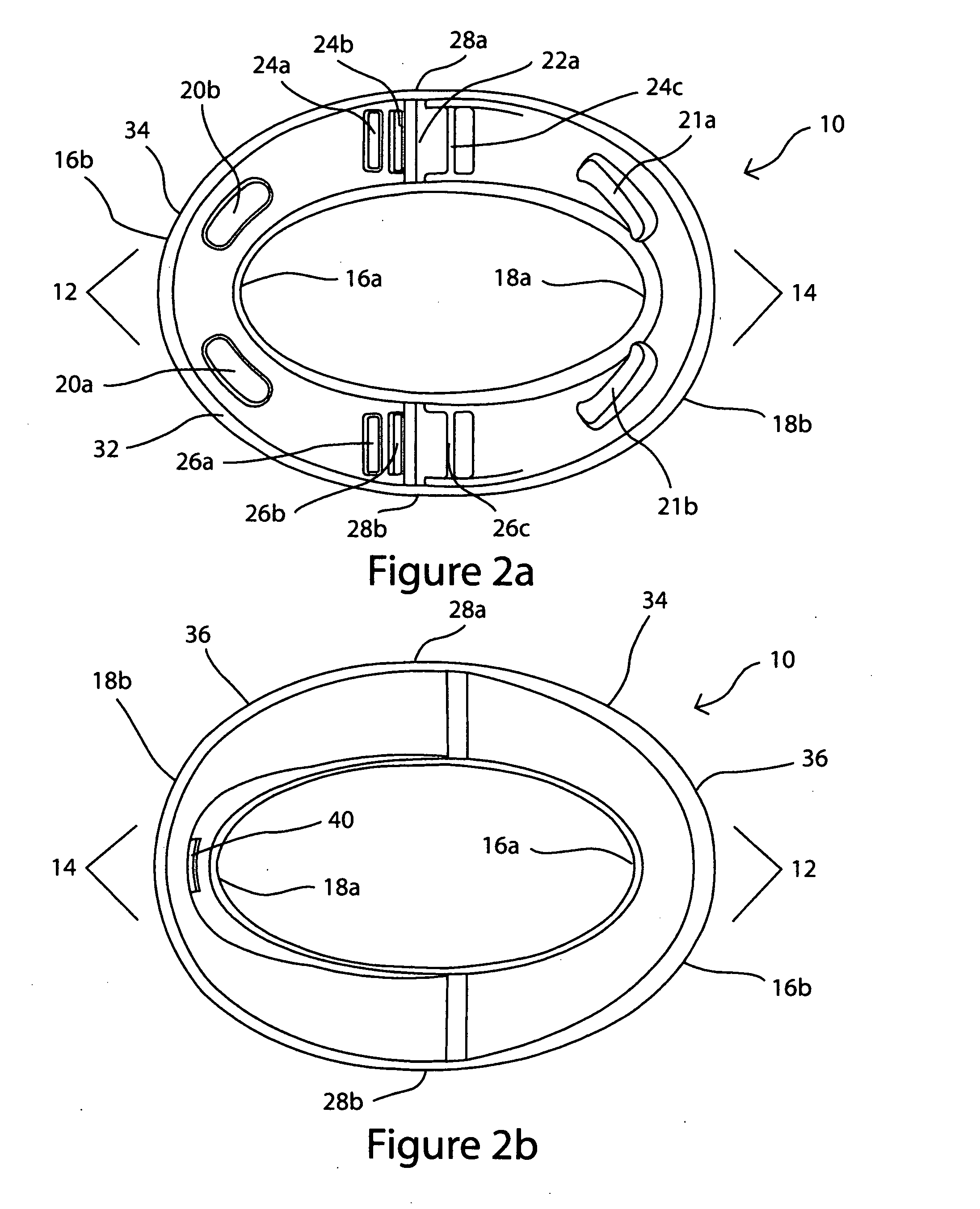Mandibular advancement device with positive positioning hinge
a technology of mandibular advancement and hinge, which is applied in the field of devices for preventing sleeping problems, can solve the problems of high cost, time-consuming, and complicated operation, and achieve the effects of eliminating the need for costly, time-consuming fitting, and being convenient to wear
- Summary
- Abstract
- Description
- Claims
- Application Information
AI Technical Summary
Benefits of technology
Problems solved by technology
Method used
Image
Examples
Embodiment Construction
[0061]In all figures, the device is shown in the open position, when not in the user's mouth.
[0062]FIG. 1 is a perspective view of the preferred embodiment of the invention. As can be seen, the one-piece overall device 10 folds at overall hinge right 22a, and overall hinge left 22b. Upper maxillary tray 12 and lower mandibulary tray 14 are both u-shaped, joined together by hinges 22a and 22b. The length of the upper and lower trays are preferably designed so that the device extends back to the centers of the upper first molars when fully inserted. This allows for ample contact between the trays and the teeth to maintain device positioning, but doesn't extend too far into the mouth so as to create discomfort or promote gagging.
[0063]FIG. 1 also shows the interlocking ridges of each hinge. Forward upper interlocking ridge right 24a, aft upper interlocking ridge right 24b, lower interlocking ridge right 24c, together form the positive engagement system. The preferred embodiment uses ri...
PUM
 Login to View More
Login to View More Abstract
Description
Claims
Application Information
 Login to View More
Login to View More - R&D
- Intellectual Property
- Life Sciences
- Materials
- Tech Scout
- Unparalleled Data Quality
- Higher Quality Content
- 60% Fewer Hallucinations
Browse by: Latest US Patents, China's latest patents, Technical Efficacy Thesaurus, Application Domain, Technology Topic, Popular Technical Reports.
© 2025 PatSnap. All rights reserved.Legal|Privacy policy|Modern Slavery Act Transparency Statement|Sitemap|About US| Contact US: help@patsnap.com



